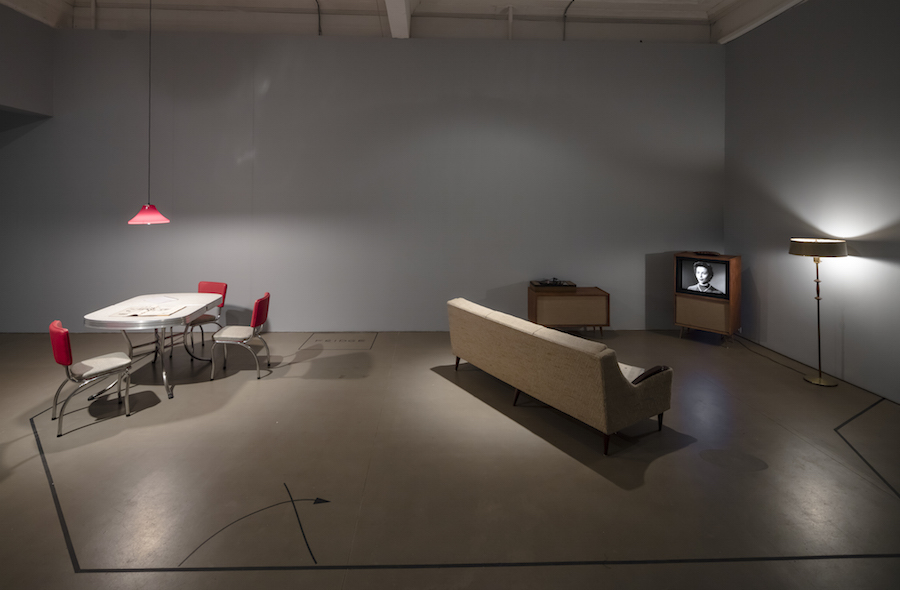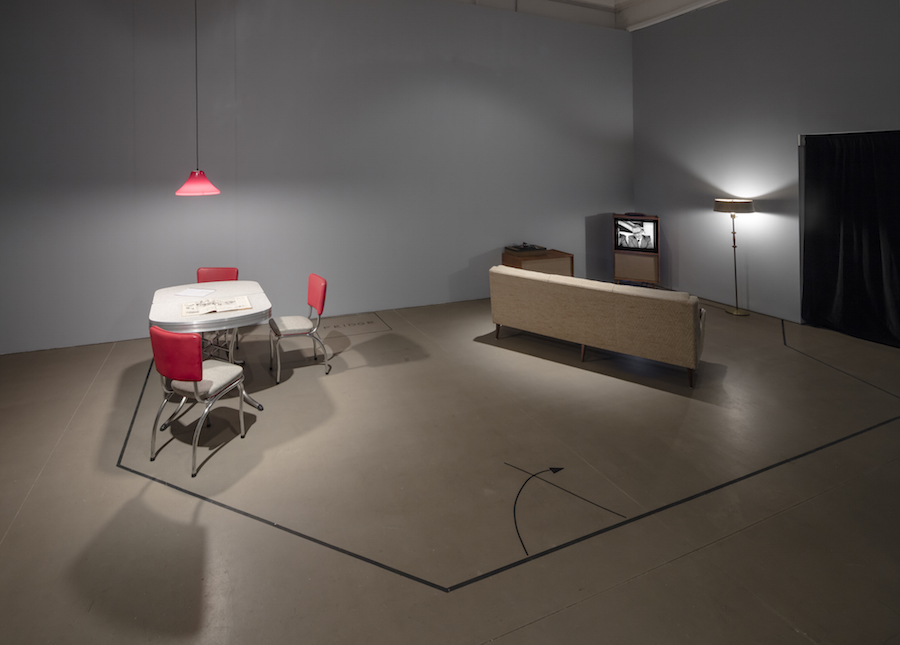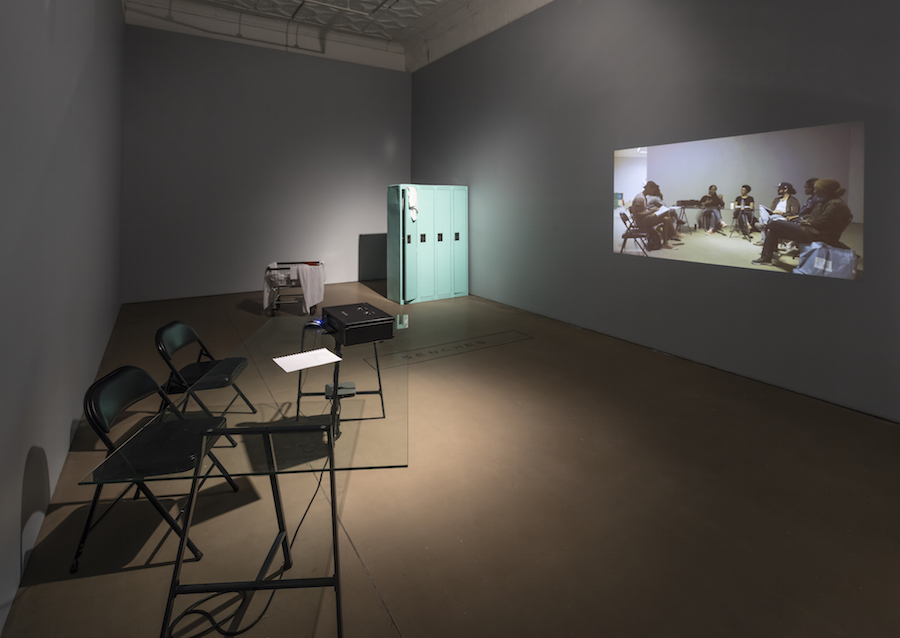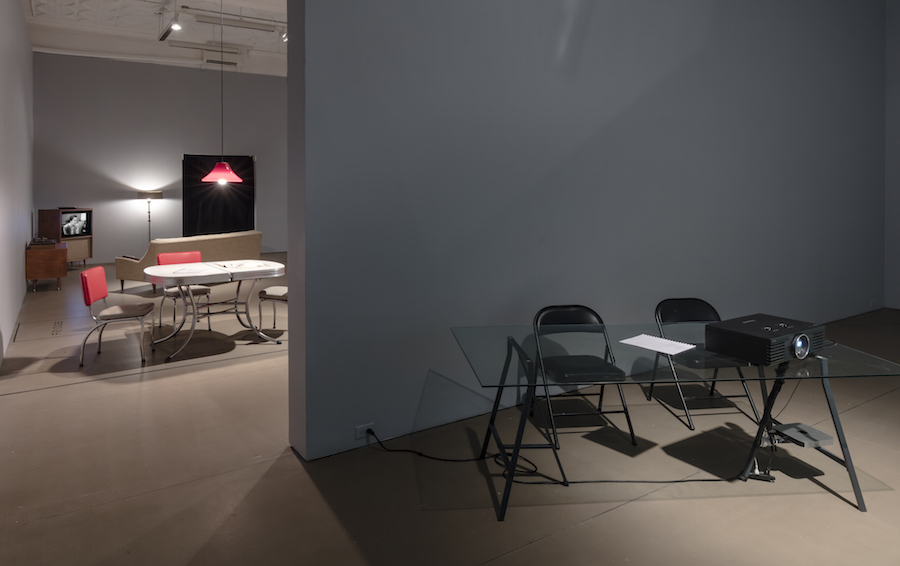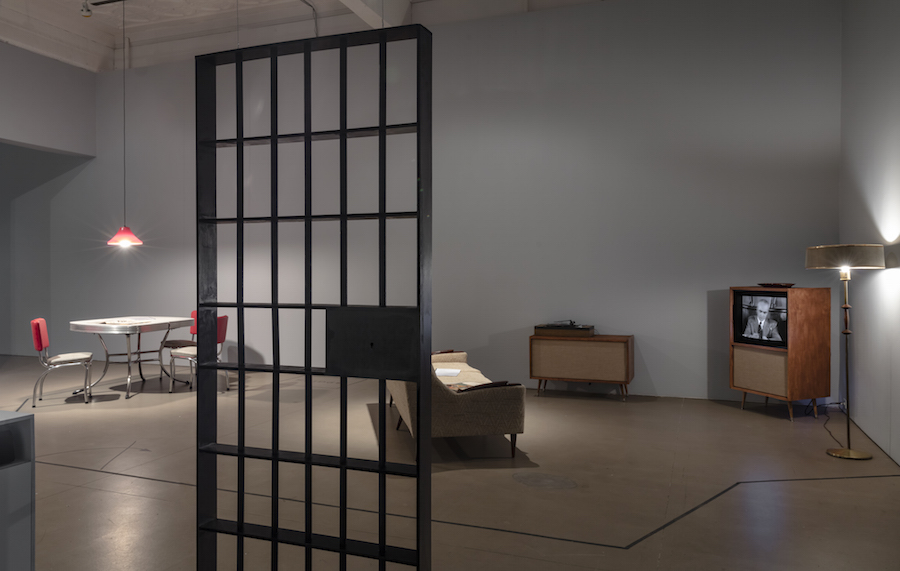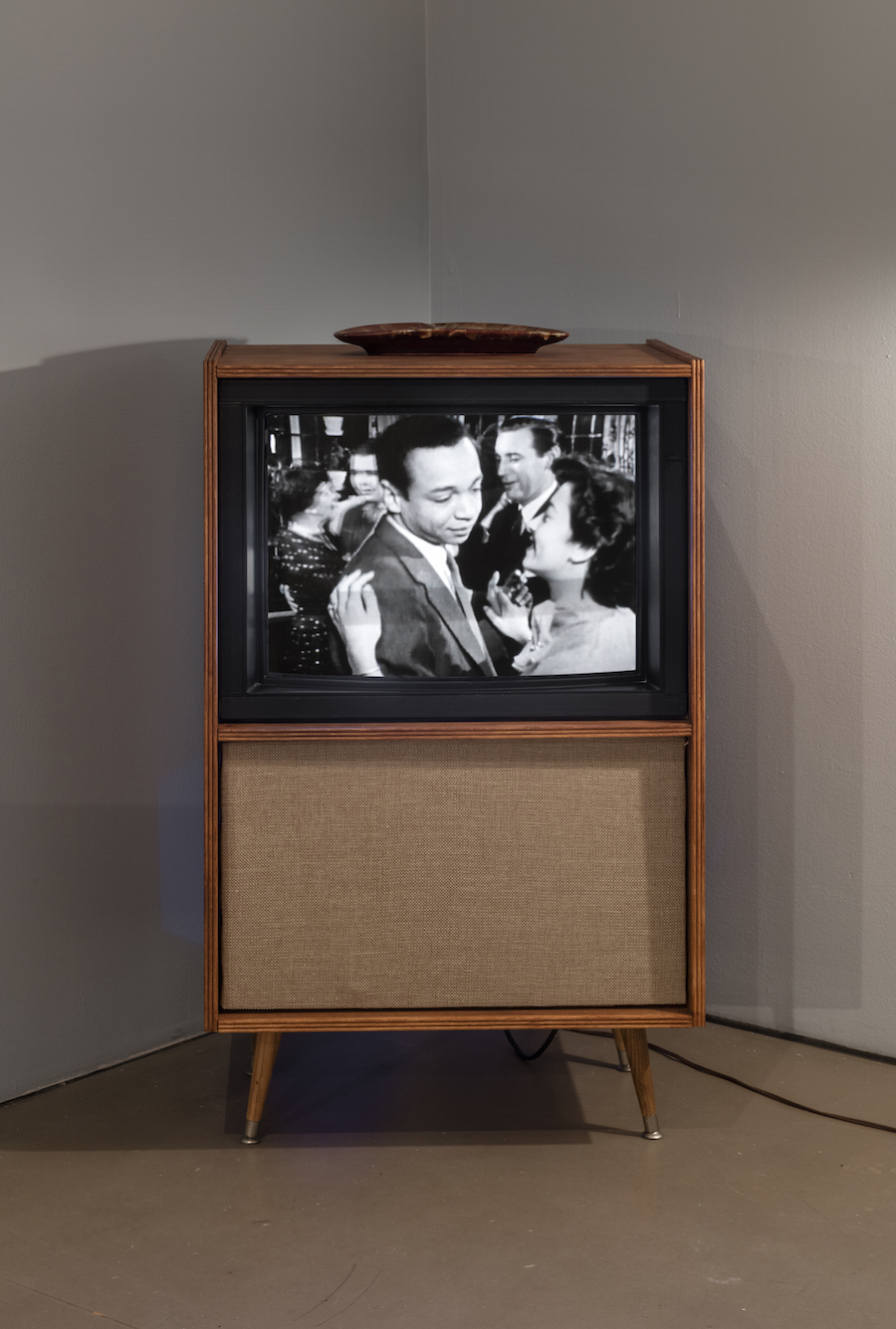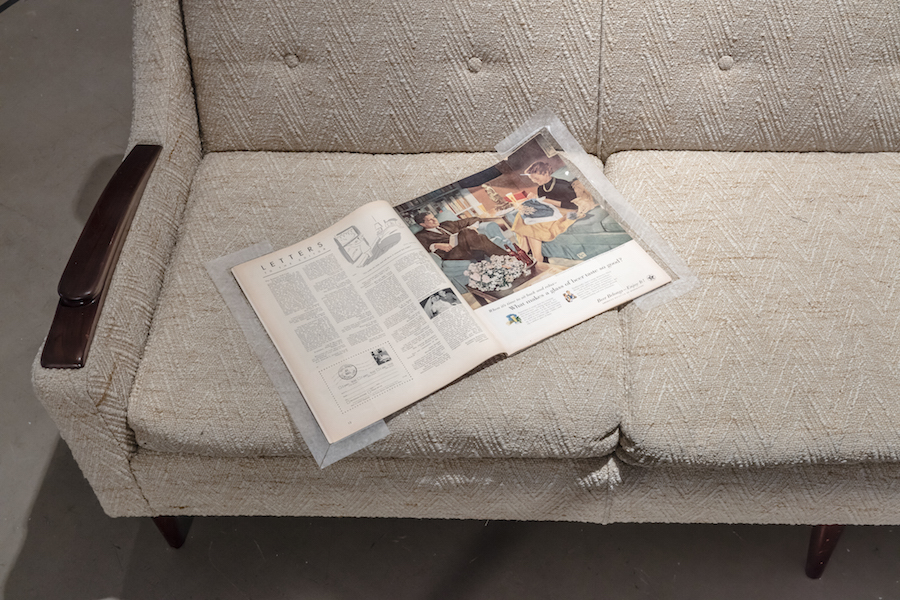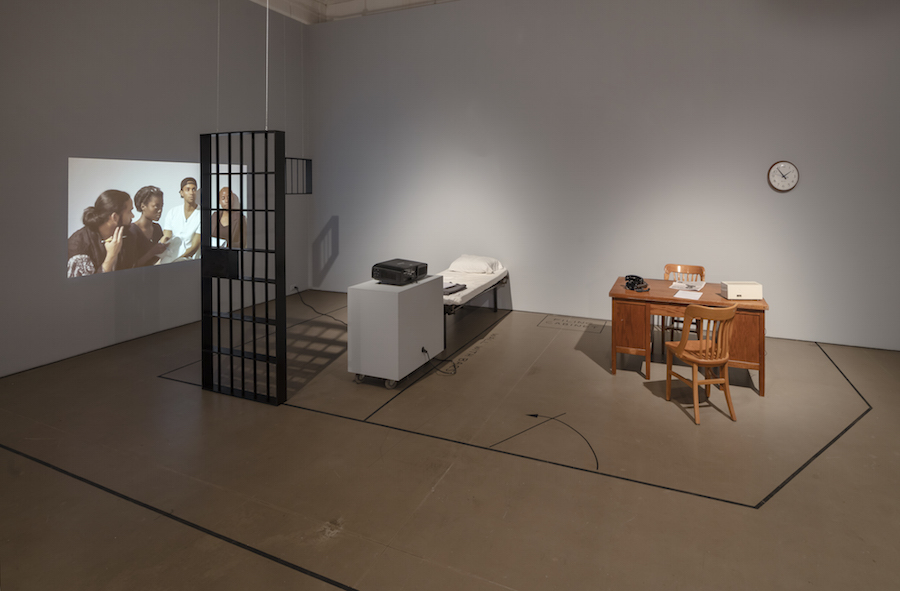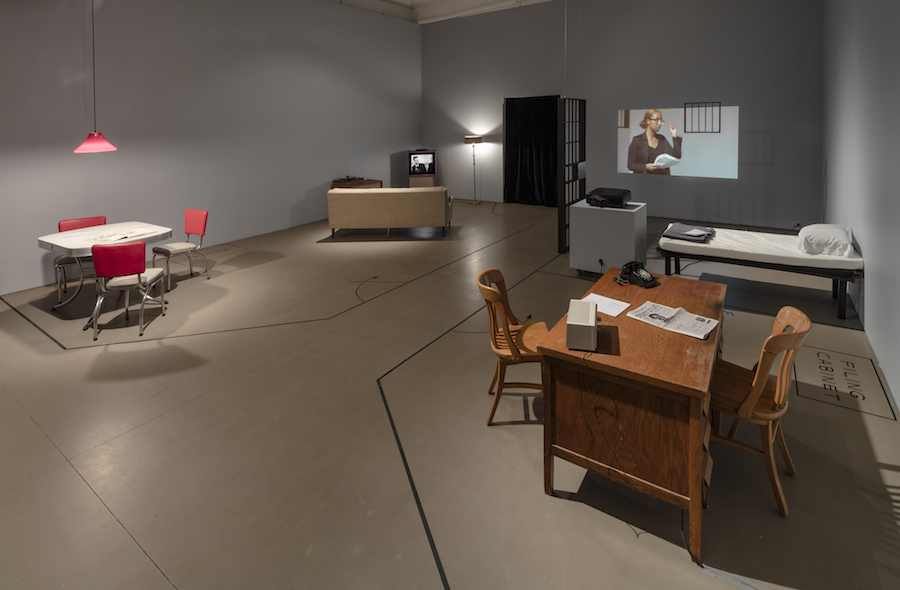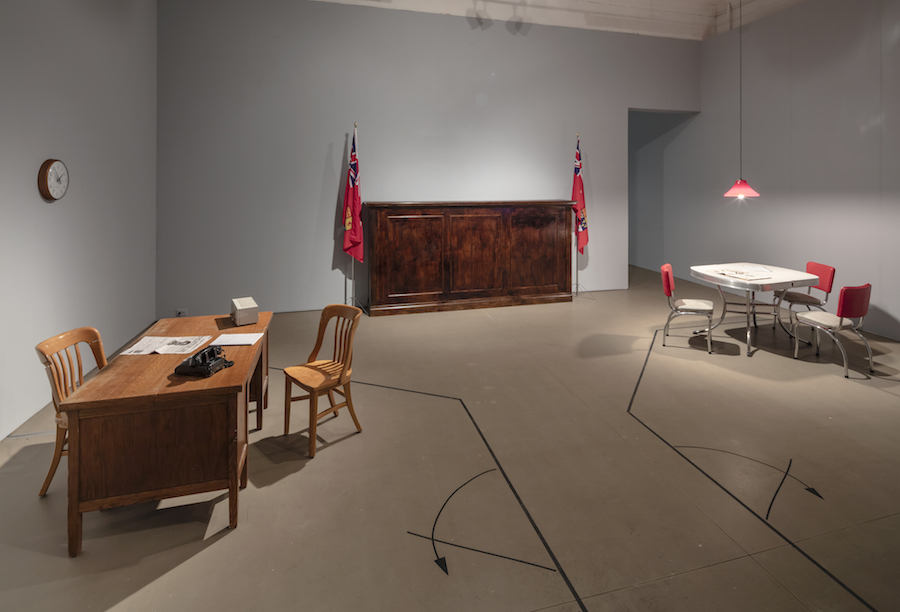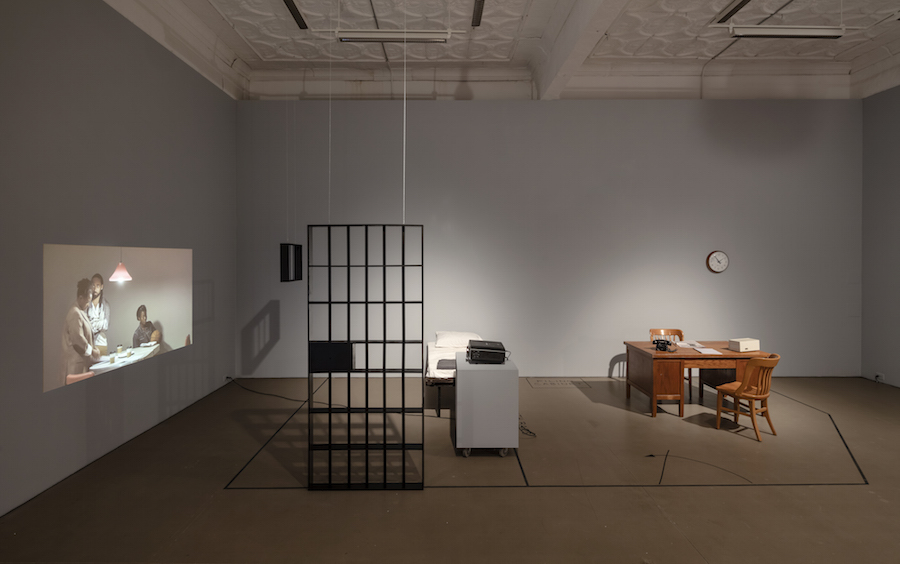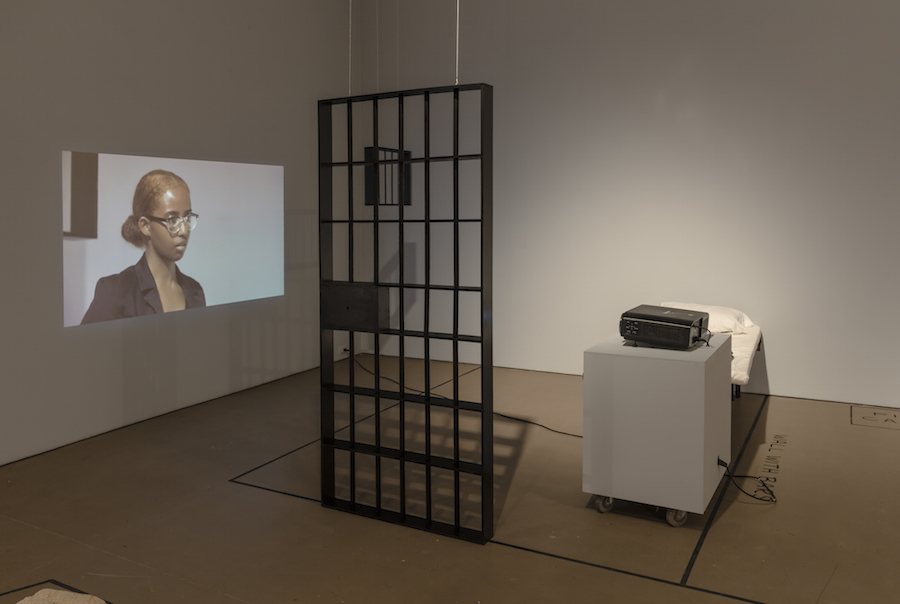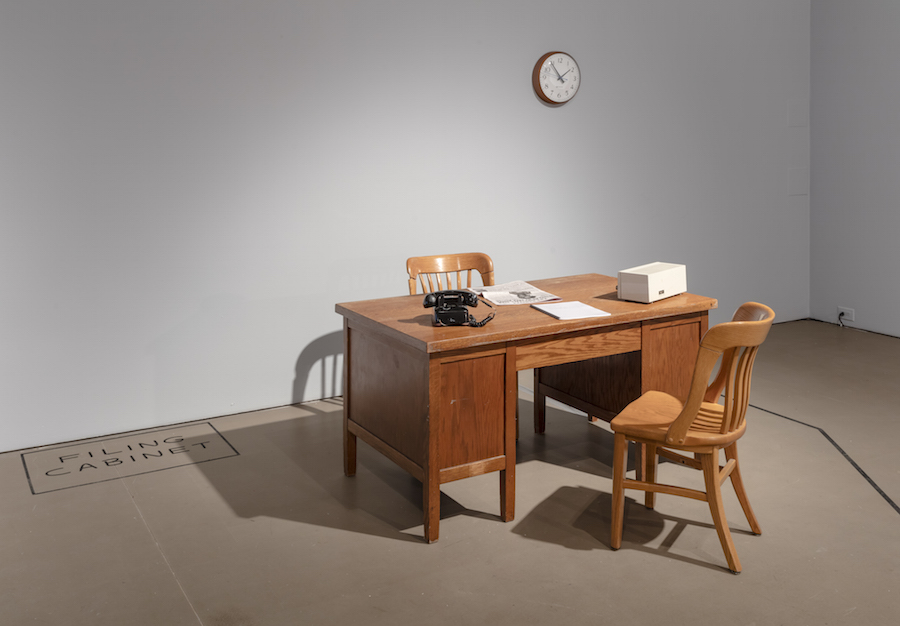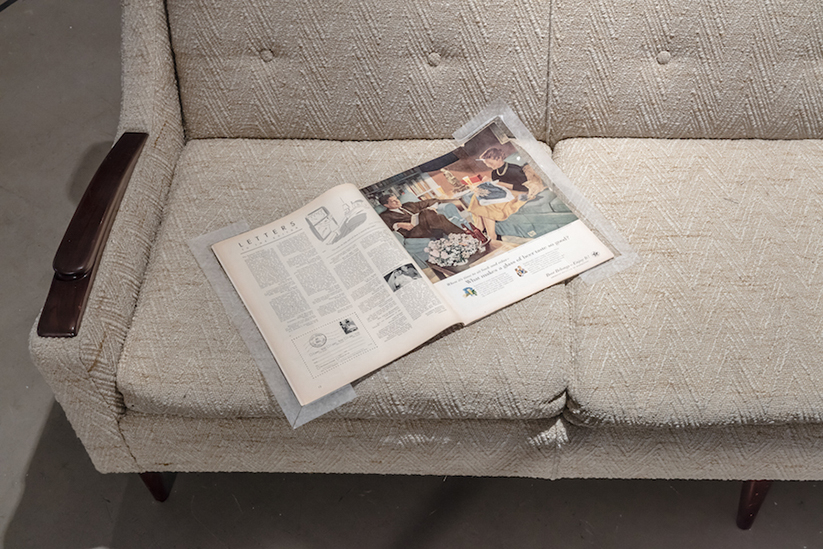Mercer Union is delighted to present a commissioned solo exhibition by Toronto-based artist Deanna Bowen. Working across film, sculpture, performance, installation, drawing and photography, Bowen excavates traumatic episodes and invisible histories. Through genealogical and historical research, she digs into histories of slavery, oppression, migration and Civil Rights’ movements, in North America, making discerning personal work through the historical. From re-staging a 1964 interview between an ABC News reporter and the Klu Klux Klan’s Imperial Wizard in Notasulga, Alabama, against the backdrop of a violent school-integration incident,¹ to tracing her family’s history from their first documentation in 1815 in Jones County, Georgia,² to today, she makes present the invisible with political force.
This newly commissioned work takes as its starting point a 1956 CBC teledrama On Trial The Long Doorway by Canadian screenwriter Stanley Mann. The teledrama tells the story of a rising Black legal aide lawyer who is assigned to represent a young white student who has assaulted a fellow student/rising Black athlete playing out in locations across Toronto such as the Don Jail, the Court House and Roncesvalles. Bowen is interested in the screenplay as the piece is a rare dramatic work that deals with Black/white race relations in Toronto and in Canada; and the live to broadcast production featured her great uncle Herman Risby in a supporting role. Broadcast from the CBC’s Toronto studios there are no archived recordings of the teledrama; the script was found in Queen’s University while set drawings by CBC Art Director Nikolai Soloviov are housed in archives in Ottawa.
On Trial The Long Doorway re-inserts this forgotten teledrama into the present day. The galleries of Mercer Union are transformed into a series of sets (a jail cell, a legal aid office, a living room, a locker room and court house) for live rehearsals and recordings to take place every Saturday for its duration. These rehearsals take place amongst archival documents from the era, from Canadian documentaries exploring race relations and University of Toronto’s The Varsity, to Life magazine’s coverage of the Emmett Till murder trial. The script will be animated by five Black actors, multiplying their roles and representations, while blurring the lines between black and white, rehearsal, action and performance. As curator Liz Park has written “The political potency of Bowen’s work lies in her ability to recharge the power of historic and archival documents.”³ On Trial The Long Doorway is an installation and ‘performed production’ work that uses the gallery space as a set for rehearsals and present day video production of the teledrama, from audition, to rehearsals, to final shot.
In delineating the necessity of “wake work” (connecting the experience of enslavement to contemporary violence, mourning, survival, and happiness) writer Christina Sharpe argues “toward inhabiting a black consciousness that would rupture the structural silences produced and facilitated by, and that produce and facilitate, Black social and physical death.”⁴ The antagonisms, divisions and traumas, of race relations in the 1956 teledrama re-staged in 2017 are even more urgent today.
